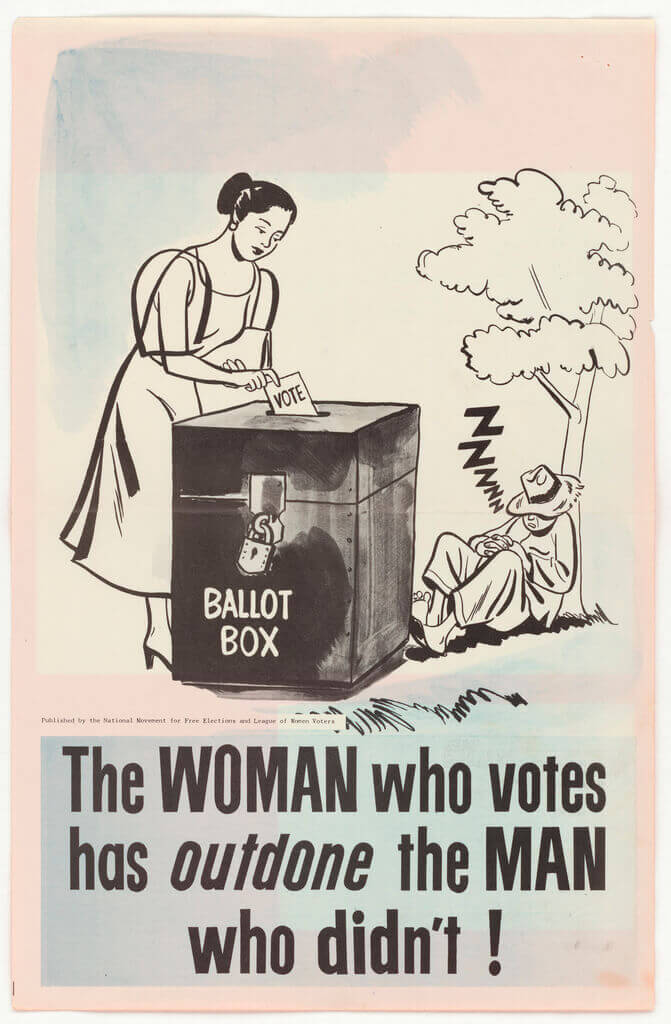
The history women’s suffrage is full of exciting and significant events. As the movement grew from determined women who wanted to share in the same rights of their male counterparts to an organized movement there was a cast of characters and events that made a full and rich history to study. Here is a brief overview of only a few significant events in women’s suffrage history.
The first woman in the North American colonies to actually demand the vote was Margaret Brent, who was the owner of extensive lands in Maryland. In 1647, Brent insisted on having two votes in the colonial assembly, one for herself and one for Cecil Calvert, Lord Baltimore, whose power of attorney she held. When the governor went on to deny her request, Brent boycotted the assembly.
Lydia Chapin Taft is recorded as the earliest forerunner in Colonial America who was allowed to vote in 3 New England town meetings, beginning in 1756. American women were the first to actively fight and organize for women’s suffrage. Events such as the Civil War and World War I influenced women like Elizabeth Cady Stanton and Susan B. Anthony to come to the forefront in the American social/political landscape.
Women in New Jersey could vote initially only because a loophole in the state’s constitution of 1790 gave the vote to “all inhabitants” who satisfied certain property and residence requirements. Property-holding women quickly took advantage of the constitution’s vague wording. It is ironic that a state legislator who had almost been defeated by women voters helped to pass a bill to disenfranchise the state’s women and black men in 1807.
It was not until during World War I when women finally started gaining momentum in their efforts. However, there were some early victories that were won in the territories of Wyoming (1869) and Utah (1870), although Utah women were disenfranchised by the U.S. Congress in 1887. The push to grant Utah women’s suffrage is assumed to be at least partially fueled by outsiders’ belief that, given the right to vote, Utah women would dispose of polygamy. It was only after Utah women exercised their suffrage rights in favor of the practice of polygamy that the U.S. Congress disenfranchised Utah women.
Other territories and states began to grant women the right to vote in the late 19th and early 20th century, but national women’s suffrage did not come until the Nineteenth Amendment to the United States Constitution was ratified in 1920. In 1848, at the Seneca Falls Convention in New York, women activists would begin a seventy year struggle for what they felt was a natural right of all Americans: the right to vote. They used tactics such as pointing out the similarities in slavery and the way women were being treated. As their strategies became more evolved women suffragists were really starting to wake up American women nation-wide. However, the courts were to be another issue. Ironically, women were not included in the ratification of the Fourteenth and Fifteenth amendments (which gave people the right to vote regardless of their race). By the end of the nineteenth century, it was only Idaho, Colorado, Utah, and Wyoming that had enfranchised women after an extreme amount of effort by the suffrage associations at the state level.
National women’s suffrage would not exist until the twentieth century. When women became more and more aggressive with their beliefs, officials became embarrassed. They started arresting the suffragists and even in jail these women were deprived of rights such as wearing uniforms and writing letters. Finally, under pressure from all of the suffrage groups, President Woodrow Wilson urged a compliant Congress to pass what became, in 1920, the Nineteenth Amendment, finally fulfilling the dream of those early activists.

Leave a Reply